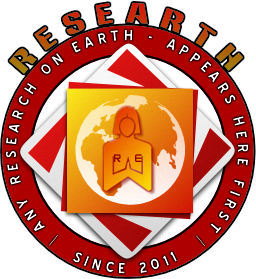Agricultural Waste Management by Hydrothermal Carbonization
DOI:
https://doi.org/10.51611/iars.irj.v12i02.2022.215Keywords:
Waste management, waste to energy, hydrothermal carbonizationAbstract
There has been a huge emphasis on converting waste into energy in developing countries like India since a couple of decades now. Agriculture is a huge industry in India and produces huge amount of agricultural waste which goes around 350 million tons every year. Out of this huge weight of waste more than 40 million tons is sugarcane bagasse. Only a small percentage of this waste is collected and out of that, less than 20% gets advanced treatments like incineration, pyrolysis etc. and the rest of it ends up in landfills. In this study Hydrothermal Carbonization of bagasse is carried out in order to raise its carbon content and achieve a higher calorific value. The waste after undergoing the HTC is called hydrochar and mostly resembles the properties of lignite coal. A number of tests are performed on the feedstock at 200 ° C and 220 ° C for three reaction periods viz. 2, 4 and 6 hours. The yield of the char is found to decreases with increase in temperature and retention time whereas the Carbon percentage shows a positive trend and goes as high as 69.1 % at 220° C with Calorific value as 24.44 MJ/kg at 6 hours reaction period.
Downloads
References
A. Leena Pauline, K. J. (2020). Hydrothermal carbonization of organic wastes to carbonaceous solid fuel – A review of mechanisms and process parameters,. Fuel. DOI: https://doi.org/10.1016/j.fuel.2020.118472
Agrawal, Akhilesh Kumar. Avlokita. "Recent trends in solid waste management status, challenges, and potential for the future Indian cities – A review. " Elsevier, Current Research in Environmental Sustainability (2020).
Bach Q, Skreiberg. "Upgrading Biomass Fuels via Wet Torrefaction: A Review." Renewable and Sustainable Energy (2016): 665-677. DOI: https://doi.org/10.1016/j.rser.2015.10.014
Benavente, V., Calabuig, E., Fullana,. "Upgrading of moist agro-industrial wastes by hydrothermal carbonization." Journal of Analytical and Applied Pyrolysis (2015): 89-98. DOI: https://doi.org/10.1016/j.jaap.2014.11.004
Dubey, B. K. (2019). Hydrothermal carbonization of yard waste for solid bio-fuel production: Study on combustion kinetic, energy properties, grindability and flowability of hydrochar. Waste Management, https://doi.org/10.1016/j.wasman.2019.04.056, 108-119. DOI: https://doi.org/10.1016/j.wasman.2019.04.056
Ekaterina Sermyagina, J. S. (2015). Hydrothermal carbonization of coniferous biomass: Effect of process parameters on mass and energy yields,. Journal of Analytical and Applied Pyrolysis,, 551-556. DOI: https://doi.org/10.1016/j.jaap.2015.03.012
Eloise Bevan, Jile Fu, Ying Zheng. "Challenges and opportunities of hydrothermal carbonisation in the UK; case study in Chirnside." RSC Adv. (2020): 31586–31610. DOI: https://doi.org/10.1039/D0RA04607H
Funke, A. &. (2010). Hydrothermal carbonization of biomass: a summary and discussion of chemical mechanisms for process engineering. Biofuels, Bioproducts and Biorefining,. DOI: https://doi.org/10.1002/bbb.198
Gwenella Saverettiar, Dan Li, Amit Gross, Goen Ho. Hydrothermal Carbonization of Cattle Paunch Waste: Process Conditions and Product Characteristics. Journal of Environmental Chemical Engineering, Elsevier. 2020. DOI: https://doi.org/10.1016/j.jece.2020.104487
H. Hajiha, M. Sain. " The use of sugarcane bagasse fibres as reinforcements in composites." Centre for Biocomposites and Biomaterials Processing, (n.d.).
Hans Günter Ramke, D. B.-J. (2009). Hydrothermal Carbonization of Organic Waste. Twelfth International Waste Management and Landfill Symposium,. Sardina, Italy: CISA Publisher.
K. Vijayaraghavan. Recent advancements in biochar preparation, feedstocks, modification, characterization and future applications. Environmental Technology. Reviews. P. 47-64, DOI: 10.1080/21622515.2019.1631393. June 2019 DOI: https://doi.org/10.1080/21622515.2019.1631393
Kalpana Bisht, Renu. "Bagasse Power, An Untapped Potential In India -A Review." International Journal Of Engineering Sciences & Research (2016): 560-563.
Kawnish Kirtania. (2018). Chapter 4 - Thermochemical Conversion Processes for Waste Biorefinery,. In A. P.-J. Thallada Bhaskar, Waste Biorefinery. (pp. 129-156). 2018: Elsevier. DOI: https://doi.org/10.1016/B978-0-444-63992-9.00004-5
Raghu Kc. Hydrothermal Carbonization of Deciduous Biomass (Alnus incana) and Palletization Prospects. Environmental Science and Pollution Research (2020) 27:24369–24379. April 2020. DOI: https://doi.org/10.1007/s11356-020-08591-w
S. Kent Hoekman, A. B. (2011). Hydrothermal Carbonization (HTC) of Lignocellulosic Biomass. Energy & Fuels . DOI: https://doi.org/10.1021/ef101745n
Sangchul Park, Q. Z. (2021). Characterization and optimization of calorific value of low grade coal by statistical experiment and modelling. Environmental Engineering Research .
Waseem Raja, J. B. (2019). Conversion of Municipal Solid Waste into Hydrochar Using Hydrothermal Carbonization. Journal of Emerging Technologies and Innovative Research (JETIR).
Weiner, B., Breulmann, M., Wedwitschka, H., Fühner, C., & Kopinke, F.-D. (2018). Wet Oxidation of Process Waters from the Hydrothermal Carbonization of Sewage Sludge. . Chemie Ingenieur Technik. DOI: https://doi.org/10.1002/cite.201700050
Witchaya Pruksakit, S. P. (2016). Hydrothermal Carbonization (HTC) of Sugarcane Stranded: Effect of Operation Condition to Hydrochar Production,. Energy Procedia, https://doi.org/10.1016/j.egypro.2016.10.169. DOI: https://doi.org/10.1016/j.egypro.2016.10.169
Downloads
Published
Issue
Section
License
Copyright (c) 2022 Waseem Raja, Ubhat Ali, Akhil Gupta, Pratik Kumar

This work is licensed under a Creative Commons Attribution 4.0 International License.
Author(s) hold complete right on the content of this article. Copyright to the content are governed as per Copyright Policy of the Journal.





















